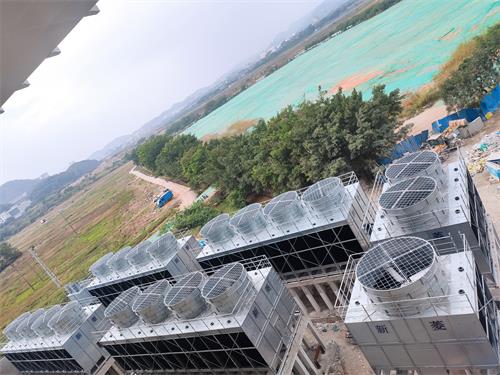
How does the cooling tower freeze in winter? I believe everyone is familiar with cooling water towers, but how does it prevent freezing in winter? Let me take you to understand how to prevent freezing of cooling towers in winter.
Anti-freezing measures for cooling towers in winter (anti-freezing plan for cooling water towers)
In recent years, with the gradual decrease in temperature, the problem of antifreeze in the operation of closed cooling water towers has become increasingly prominent, which may lead to the freezing of heat exchange tubes or other parts of the cooling water tower. According to different process characteristics, some closed cooling towers operate all day in winter, some operate partly, and some are almost not used. However, you need to consider the use of antifreeze.
For the antifreeze problem of closed cooling towers, we can start from the following points:
First, drain the water in the cooling tower
Generally speaking, the cooling water tower has a lower water discharge point, that is, the water in the cooling water tower is drained when not in use in winter to prevent the external temperature from being too low in winter and causing frostbite to the coil.
Two, installation skills
In order to prevent the water in the coil from being unclearly discharged in bad weather and the remaining water freezes, causing the coil to rupture, slightly adjust the installation elevation of the cooling water tower during construction, and try to keep the drainage point of the coil at a low point to reduce residual water.
Three, heat tracing cable antifreeze
Due to the convenient steam access, the large latent heat of condensation, and the convenient temperature adjustment, steam tracing is also an effective thermal insulation and anti-freeze-thawing measure, which is widely used in various engineering constructions. Its working principle is to use the heat radiated by the heating medium to supplement the heat loss of the heating body through direct or indirect steam-water heat exchange to meet the requirements of temperature rise, heat preservation or antifreeze. The steam tracing for anti-freezing of cooling tower is to lead the steam pipe to the sump of the cooling tower, and a coil is made at the bottom of the sump. The steam enters the steam coil in the sump through the pipe, and heats the pool water through steam-water heat exchange to achieve anti-freezing. the goal of.
Four, add antifreeze in winter
In some areas with severe weather, in order to prevent some of the water in the enclosed cooling tower from freezing at low temperatures in winter and the coils from cracking, add antifreeze to the cooling tower, that is, to reserve an antifreeze addition port during the construction process. In winter, according to The actual situation is to add antifreeze to the cooling tower.
If the cooling water tower is installed outdoors (or below 0°C), antifreeze can be added to the water tank and spray box. Refer to the antifreeze manual for the amount of antifreeze. Antifreeze mainly contains water ethanol, and the quality of antifreeze is mainly reflected in the content of water ethanol. Can choose high content.
This is about the antifreeze of the cooling tower in winter, what do you think, welcome to consult and discuss!
Article Address:https://www.trlen.com/baike/563.html
Guangdong Trlon Energy-saving Air Conditioning Equipment Co., Ltd.
Contact:Mr. Wang
Free Hotline:4008-8383-95
Company Email:sales@trlon.com
Web Site:https://www.trlen.com/
Company Address: 1916A, Block A, David Donglong Business Building, Longhua, Longhua District, Shenzhen